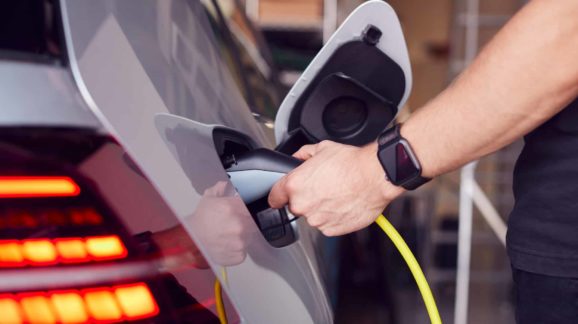Is General Motors’ Shift to More Electric Vehicles Good for the Environment?

Photo Credit: Getty
General Motors recently announced a major push toward electric vehicles (EVs), pledging $27 billion in investment by 2025 and promising to have 30 EV models available by then. “Climate change is real, and we want to be part of the solution by putting everyone in an electric vehicle,” said GM Chairman and CEO Mary Barra about her company’s ambitious goals.
Yet, there are serious doubts whether “putting everyone in an electric vehicle” can be done given that the majority of car buyers don’t want them. But there are also questions whether it should be done, since there are doubts whether EVs really are better for the planet, especially if they are to be manufactured on the scale GM has envisioned.
The environmental advantages of EVs over conventional internal combustion engine vehicles are as obvious as the lack of the tailpipe emitting smog-forming compounds and carbon dioxide. Less obvious, but just as real, are a number of disadvantages.
An EV battery requires a number of mined materials—cobalt, lithium, rare earths, graphite, and others. Much of it is produced in places where environmental safeguards are few. A United Nations report finds that cobalt mining in Congo “pollutes rivers and drinking water,” and that lithium production in South America causes “ecosystem degradation and landscape damage.”
Chinese-based companies, both through domestic mining and through acquisitions around the world, have a dominant position in rare earths as well as several other EV components. Their environmental record is generally a bad one. Scaling up EV production to meet GM’s goals means scaling up the mining impacts as well.
EVs also require more energy to manufacture than conventional vehicles, much of which is carbon dioxide-emitting fossil fuels. From a climate policy standpoint, this means each new EV incurs a counterproductive carbon debt before it is driven its first mile. That debt is eventually paid off using presumably lower carbon electricity rather than gasoline, but even EV supporters concede that it could take up to two years of driving. Others say it could be considerably longer. Either way, the climate benefits are not as clear cut as GM’s public relations team suggests.
End-of-life issues are another overlooked concern. If millions of EVs are to be made each year, that means millions of spent EV batteries will have to be disposed of. Conventional disposal is not an option given the dangerous chemicals involved. Recycling of EV batteries has a long way to go, as current methods are not cost effective and create emissions issues of their own. The recycling process is also energy intensive, which once again dilutes the climate change rationale for EVs. There are also public safety risks, as junked batteries may still hold a deadly charge and pose a fire hazard.
Doubtless there will be debates ahead over government subsidies for EVs, and given GM’s new policy it is likely the company will aggressively advocate for them. But these debates should not begin from the assumption that a pro-EV policy clearly is the right thing to do for the environment. The real story is a mixed one.
For more on the environmental impacts of EVs, see Would More Electric Vehicles Be Good for the Environment?